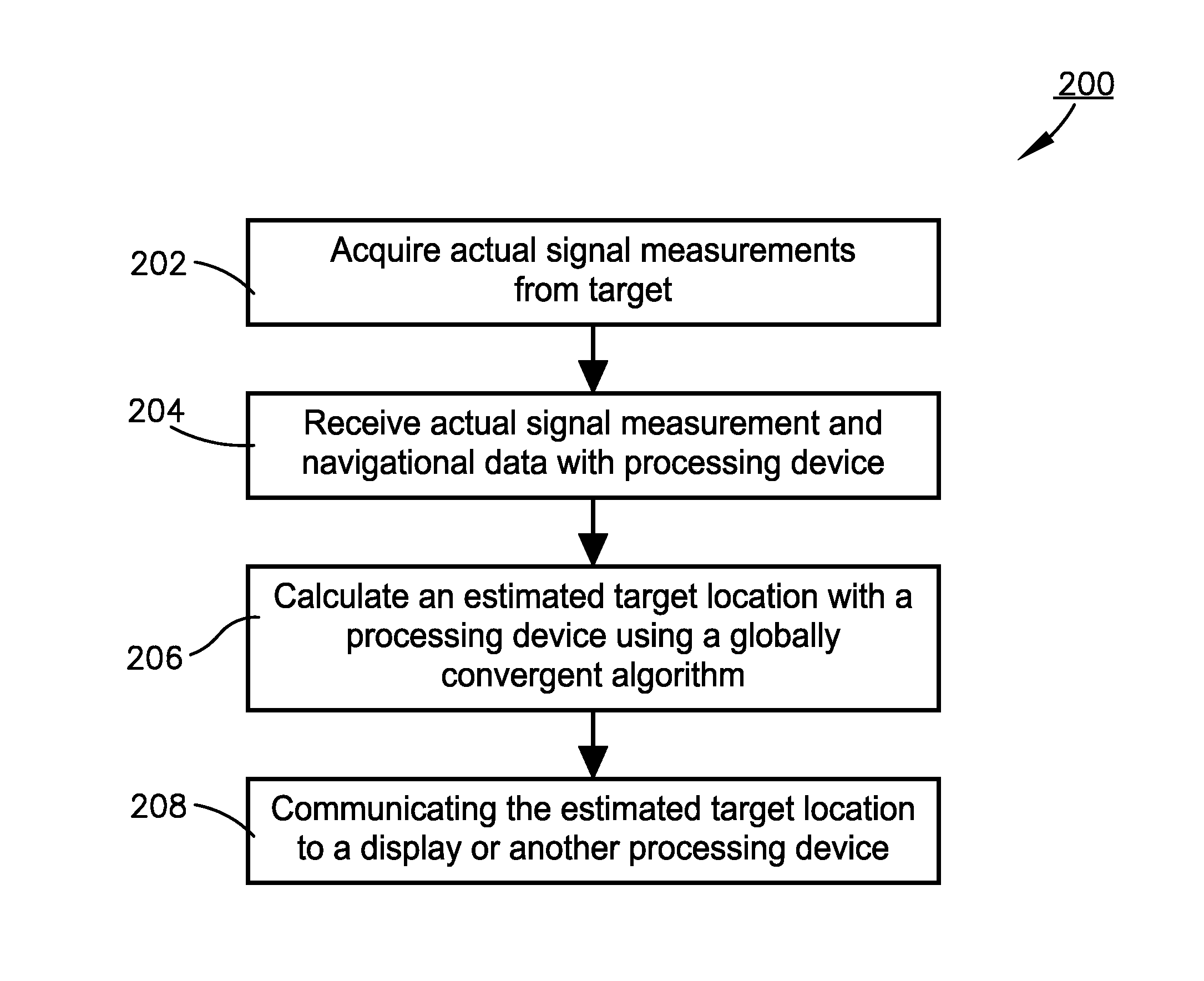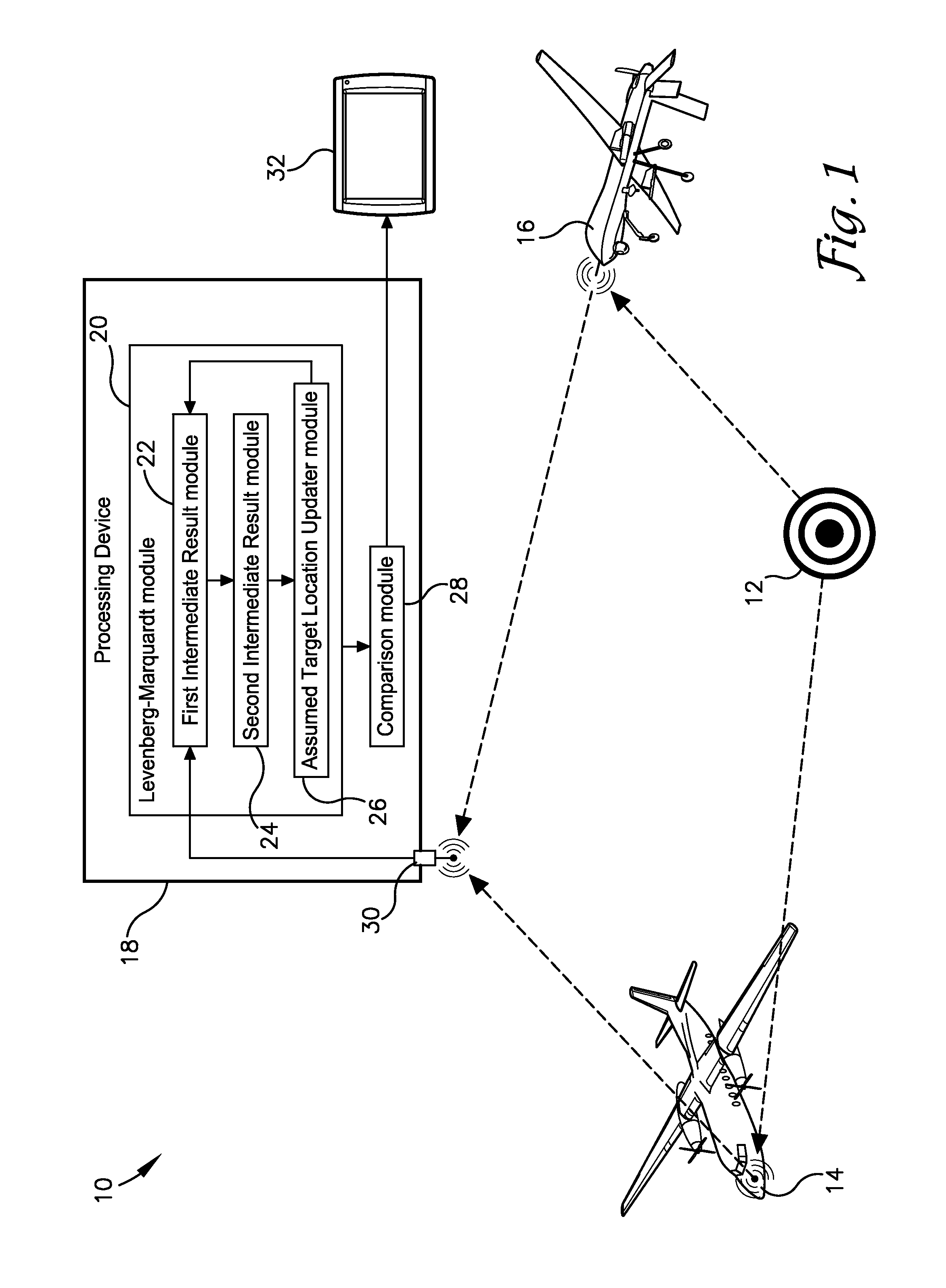Globally-convergent geo-location algorithm
a global convergence and algorithm technology, applied in direction finders, direction finders using radio waves, instruments, etc., can solve the problems of determining an initial location estimate that is difficult, zero, one, or multiple intersections, etc., and achieves the effect of reliable approximation of a geolocation
- Summary
- Abstract
- Description
- Claims
- Application Information
AI Technical Summary
Benefits of technology
Problems solved by technology
Method used
Image
Examples
Embodiment Construction
[0024]The following detailed description of the invention references the accompanying drawings that illustrate specific embodiments in which the invention can be practiced. The embodiments are intended to describe aspects of the invention in sufficient detail to enable those skilled in the art to practice the invention. Other embodiments can be utilized and changes can be made without departing from the scope of the present invention. The following detailed description is, therefore, not to be taken in a limiting sense. The scope of the present invention is defined only by the appended claims, along with the full scope of equivalents to which such claims are entitled.
Target Locating System Components:
[0025]FIG. 1 illustrates a target locating system 10 configured to estimate or approximate a geographic location or geo-location of a non-cooperative target 12, such as enemy aircraft, tank, missile, silo, etc. The system 10 may comprise one or more collectors 14, 16 for collecting one ...
PUM
 Login to View More
Login to View More Abstract
Description
Claims
Application Information
 Login to View More
Login to View More - R&D
- Intellectual Property
- Life Sciences
- Materials
- Tech Scout
- Unparalleled Data Quality
- Higher Quality Content
- 60% Fewer Hallucinations
Browse by: Latest US Patents, China's latest patents, Technical Efficacy Thesaurus, Application Domain, Technology Topic, Popular Technical Reports.
© 2025 PatSnap. All rights reserved.Legal|Privacy policy|Modern Slavery Act Transparency Statement|Sitemap|About US| Contact US: help@patsnap.com



